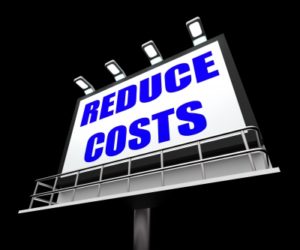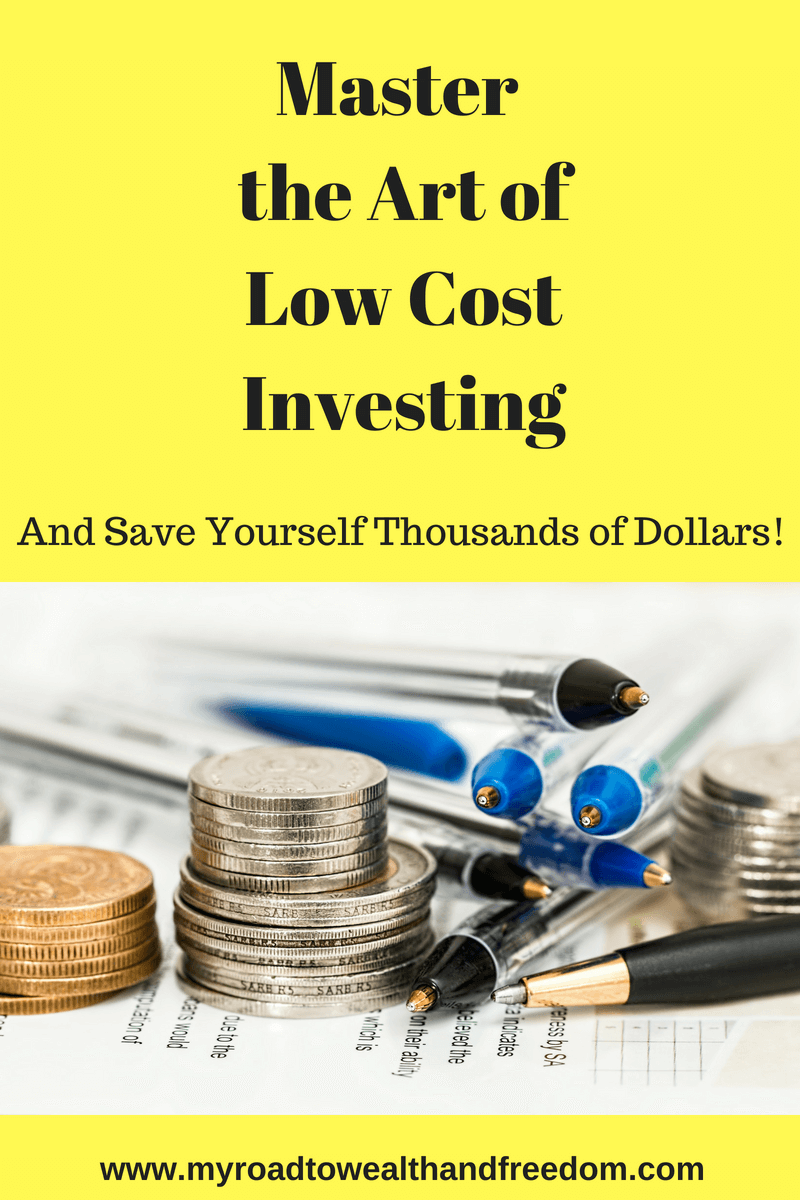Welcome to my post on low cost investing. When it comes to investing, many people think that success comes from buying the right stock and selling it at the right time. That it’s all about timing market to get in at just the right time, or selling out of the market when news breaks that there’s gonna be a big drop.
The reality is that nothing could be further from the truth. The only thing that really matters is understanding that to be successful, all one has to do is to follow the low-cost approach.
So what is low-cost investing? Well, low cost investing is all about making our hard earned money go as far as possible. Following a low cost investing approach is important because there’s so much research out there about how high fees suck the returns out of our investments over time.

If you want to learn more you can read about the impact that high fees have on investments in my piece on the Danger of Mutual Fund Fees. Suffice it to say that seemingly small fees of 1%-3% can cost you hundreds of thousands in potential investment returns over a 25 year period. So here is a post on how to take a low-cost approach to investing.
Low Cost Investing: How to Get Started
When it comes to opening a discount brokerage account, I feel that Questrade is still the best choice for Canadians, which is why I promote them on this site. They offer low $4.99 commissions to buy and sell stocks, which is half price compared to the usual commissions at TD Waterhouse and other big bank discount brokers.
What Types of Investments Should I Buy?
As far as I’m concerned, the best feature about Questrade is that they offer commission-free ETF (exchange-traded fund) purchases. This is great news because ETFs are excellent products for old and new investors seeking diversification at the lowest possible cost.
For those who are unfamiliar with exchange-traded funds (ETFs), they are similar to mutual funds in that they hold various securities which offer diversification, while unlike mutual funds, they can be bought and sold like stocks on the exchange and have much lower fees. Personally, I like the low-cost ETFs offered by Vanguard so I encourage everyone to visit their website for more information on their products.
How to Set Up a Basic Investment Portfolio?
A person can easily create a well-diversified, low-cost investment portfolio by making regular monthly ETF purchases. Creating a broadly diversified portfolio doesn’t have to be super complicated. It can be as simple as selecting the Vanguard index ETF below:
30-50 % in an S&P 500 ETF index (VFV)
25-30% in a Global ETF index (VIU)
10% in a TSX ETF index (VCE).
10-25% in a Bond ETF index (VAB)
5% in a REIT ETF index (VRE).
How Do I Manage My Investment Portfolio?
A portfolio like the one above can be set up and forgotten about. Just revisit the percentages once a year to see where money needs to be added or trimmed to return them to their original allotments. That’s called rebalancing and it’s a way to sell some of your winners (sell high) and buy the losers (buy low). This is exactly what every investor tries to do, but very few actually succeed in doing due to human psychology.
Where to Hold Your Investments?
Should you open a Registered Retirement Savings Plan (RRSP)? What about a Tax-Free Savings Account (TFSA)? Will I get taxed on my investments if I hold them outside of those accounts? These are some common questions that people have when it comes to investing.
To figure out where to keep your investments you need to figure out why you’re investing in the first place. If the purpose is for retirement and you earn over $50k a year, then it makes sense to use an RRSP. If you make less than $50k a year or you just want to be able to access your money without any penalties, then a TFSA makes sense. Just remember that if you hold investment outside of these accounts they will be subject to income tax.
Registered Retirement Savings Plan (RRSP)
RRSP contributions give us tax refunds that can be used to make more investments in our RRSPs which will generate further tax refunds and so on. Or they can be used to invest in a TFSA. While TFSAs don’t give us tax refunds they do shelter dividends and capital gains from the tax man. If we follow that 2-pronged investing approach then, over time, it will provide for a more secure retirement and provide a strong financial position more generally.
Personally, I consider an RRSP as “dead money” until I retire because of the penalty for early withdrawals. For those who don’t know, a person can withdraw money from an RRSP but doing so will trigger an automatic withholding tax, plus the loss of the contribution room. So it’s really not worth it and will hurt rather than help your finances.
Tax Free Savings Account (TFSA)
The TFSA, on the other hand, is great because you can withdraw money at any time. If you’re in a pinch for cash you can access money in the TFSA. It can provide a nice cash cushion or emergency fund. For more information about the TFSA see my article here.
Investing Outside of Tax Sheltered Accounts
It only makes sense for someone to consider investing outside of an RRSP or TFSA, once they have maxed out their contributions for those accounts. Holding investments outside of tax-sheltered accounts will most definitely have tax consequences.
Investors pay taxes on capital gains if they sell an investment that they’ve made a profit on, or when they receive dividend income. Dividends from eligible Canadian corporations get favorable tax treatment. Interest, on the other hand, is the worst type of investment income to receive outside of a tax sheltered account because it is the most heavily taxed (at your marginal rate).
Thanks for reading my post on low cost investing.
Image Credit: Image courtesy of Stuart Miles / Freedgitialphotos.net

This seems like a really important endeavor to engage in low cost investing. Thank you for breaking down this information.